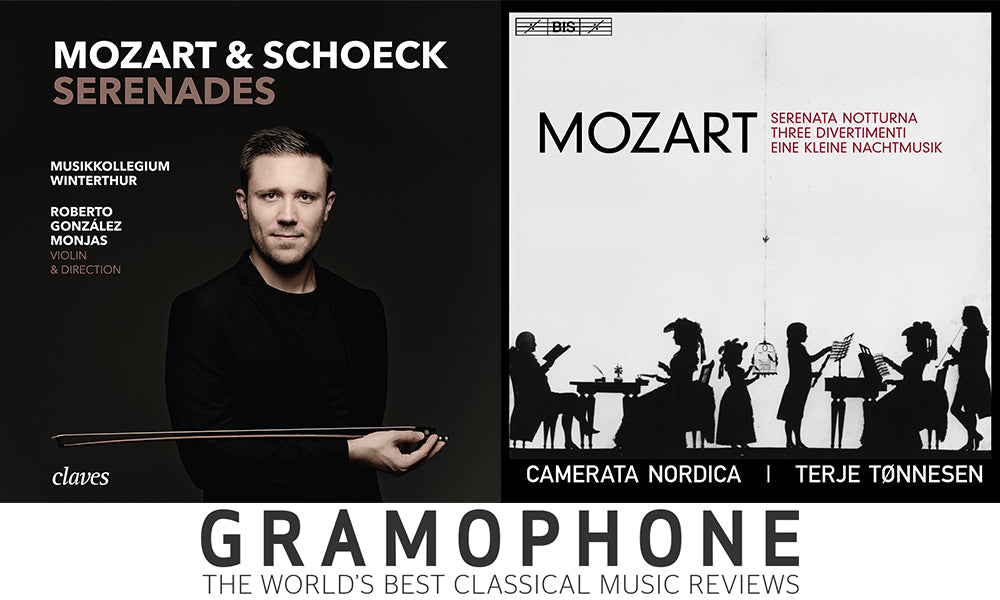
Gramophone (UK): Mozart Serenades
An hour spent with Mozart in light-music mode is always an hour well spent, and here we have not one but two hours of entertainment and pleasure. The Haffner Serenade appears to have been written as a Brautmusik (‘bride music’), commissioned by its namesake for the wedding of his sister. What we hear actually starts with the D major March, K249, co‑opted as the opening processional for the serenade, then an expansive sonata Allegro followed by a nearly full-fledged violin concerto, then a pair of minuets flanking a weighty Andante before the finale.
In all it’s 64 minutes’ worth of music, saved from outstaying its welcome by Mozart’s ever-questing ear for an effect, among the most piquant perhaps being the pizzicato passage towards the end of the Andante. It’s played admirably here, under the direction of the well-travelled Roberto González Monjas (concertmaster in Rome as well as Winterthur, and a professor at the Guildhall School in London). Schoeck’s Op 1 Serenade of 1906‑07, like the Haffner 130 years earlier, is the work of a 20-year-old, albeit one here finding his individual voice and much influenced by his teacher Reger; with its Straussian chromatic harmonies and eight-minute duration, it makes an ear-catching coupling for the Mozart. The sound (Winterthur’s Stadthaus) flatters both works.
Camerata Nordica’s disc, labelled ‘Serenades & Divertimenti’, opens neither serenely nor divertingly but with the austerity of the C minor Adagio and Fugue before relaxing into the familiar Eine kleine Nachtmusik and Serenata notturna. Terje Tønnesen maintains maximum contrast in this (nearly) all-string music by alternating judiciously between solo and massed forces, and, in the Trio of Eine kleine’s Minuet, introducing a nyckelharpa (Swedish keyed fiddle) to add to the high jinks. Nor are the timpani backwards in coming forwards in the Serenata notturna. The three early divertimentos (often performed, like Eine kleine, as quartets rather than string-orchestra works) close the show and reveal that there’s far more beyond their playful surfaces than is often realised (K138 especially shows just how brilliant the 16-year-old Mozart really was). Tønnesen and his crack players display all the virtuosity and tenderness required to bring the most out of this music. Two hours well spent!
Albums:
Article's source: Gramophone Magazine, UK, by David Threasher
Find it online
HR Music
Qobuz HR
Technics Tracks
7digital
Links
More articles about this artist
Artist's website (Verbier Festival)




Commentaires
0 Commentaires